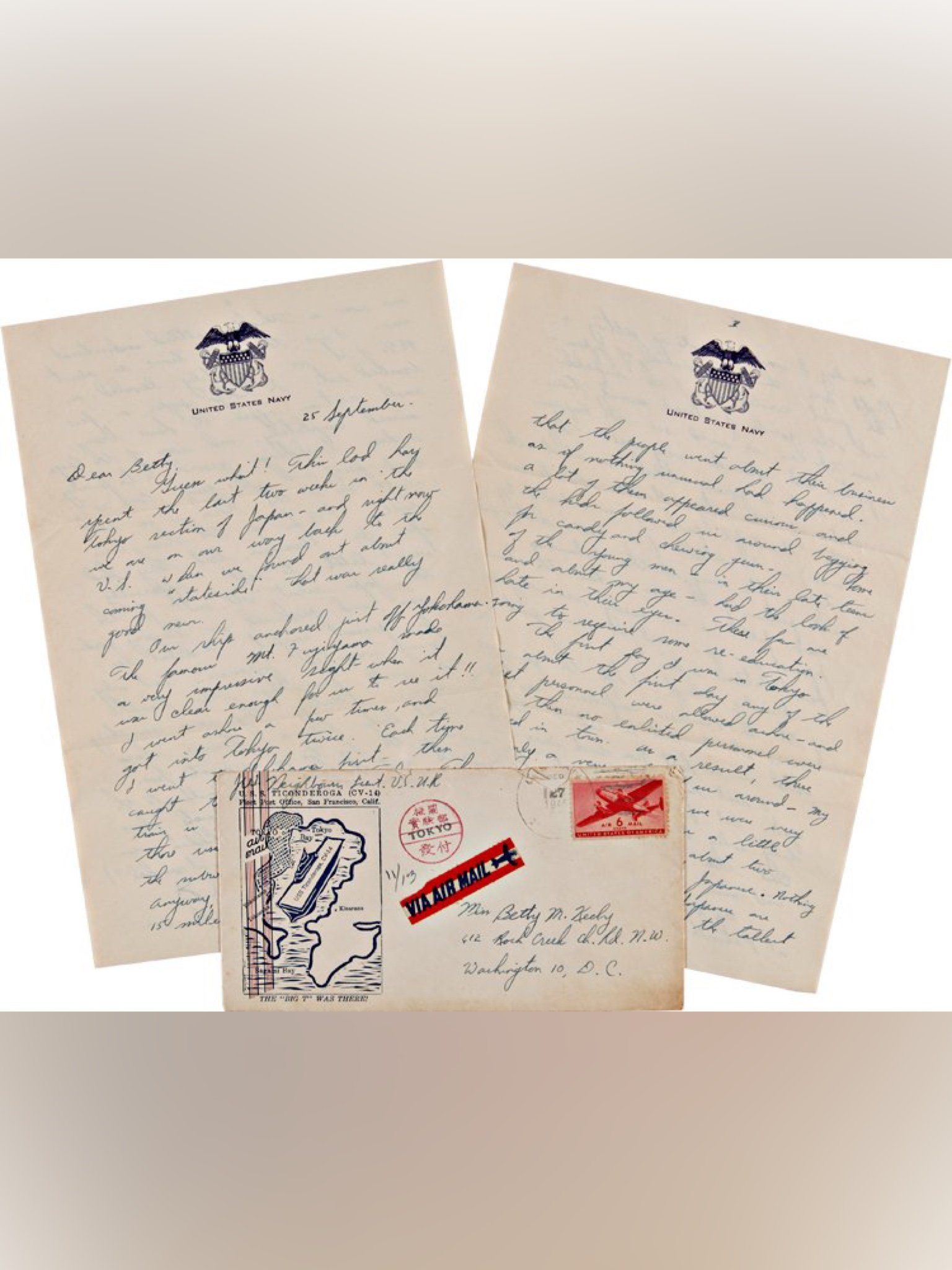(World War II) Eyewitness Account of Tokyo Immediately After the Japanese Surrender
Eyewitness Account of Tokyo Immediately After Surrender
Autograph letter signed from U.S. Navy Reserve Officer J.W. Neighbourn, [Tokyo]. September 25, 1945. Two sheets of U.S. Navy stationery, written on both sides of each in blue ink, plus pictorial envelope with stamp.
A letter written by Lieutenant J.W. Neighbourn, a U.S. Navy officer on the U.S.S. Ticonderoga to a Betty Keely in Washington, D.C. The Ticonderoga sailed in to Tokyo Bay on September 6th, only four days after the official surrender of Japan on board the U.S.S. Missouri. Neighbourn was one of the very first Americans allowed on shore in Japan after the war. He made several visits to Tokyo, disembarking in Yokohama and taking an electric train, “like those used by the N.Y. railroad in the subways or by the Chicago ‘El,‘” to the capital. He describes his first impressions of the landscape and the city, remarking on the destruction he saw there. He calls the surrounding area “about 90% leveled or bombed out” along with three quarters of the city proper, although he notes that “some of the large modern buildings proved to be fairly bomb-proof and fire-proof.” He also describes the few Japanese people he sees, particularly noting their tabi shoes (with a separated toe “similar to the way a mitten has“) and geta sandals, which he illustrates with a small sketch. He was surprised to see life somewhat as usual mentioning “the people went about their business as if nothing unusual had happened.” He was largely well received by locals, but mentions that “some of the men – in their late teens and about my age – had the look of hate in their eyes. These few are going to require some re-education.” Commenting on being there so early, he wrote “5 Americans in about two city blocks filled with Japanese. Nothing happened though. These Japanese are really small people – even the tallest is shorter than I.” He also had the opportunity to take an aerial tour of the area, during which he was particularly struck by the untouched Emperor’s palace in the middle of the destroyed city. “It looks odd to see this beautiful park (it was untouched by bombs) in the middle of a semi-destroyed city. After seeing all this destruction – and pictures of the area where the atomic bomb fell – one can easily see why the Japanese gave up. And it wasn’t just from ‘atomic ache’. I hope the principles of the San Francisco conference can be carried out to such an extent that the world can be kept from such wars as this,” he declares in response.
The letter’s original envelope is also present, made custom for the U.S.S. Ticonderoga. It features a printed illustration of the ship in the middle of Tokyo Bay with the caption “The ‘BIG T’ was there!”
An intriguing look into the impressions of an American military man in Tokyo in the days immediately following World War II.

